|
Sep
19
2022
|
|
Posted 3 years 93 days ago ago by Admin
|
|
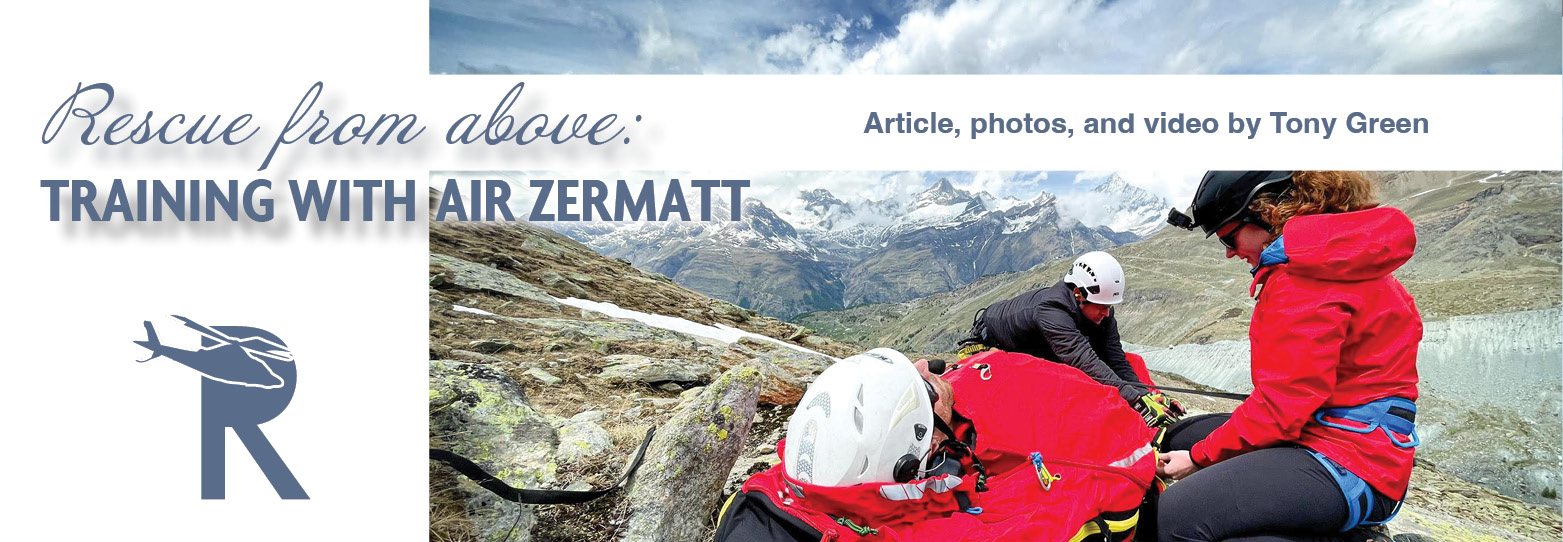
WATCH VIDEO
The village of Zermatt, Switzerland, is nestled at the base of the majestic Matterhorn in the midst of a renowned hiking and ski region. These amazing attributes combine to create one of the world’s most iconic vacation resorts.
The region is legendary amongst mountaineers. The Haute (High) Route, a challenging international hiking and ski route that takes several days to complete, runs from the Matterhorn to Mont Blanc, the highest peak in the Alps. More than 400 kilometers of hiking trails wind through and out of the Matterhorn Valley, drawing year-round visitors. However, this alpine paradise also harbors potential dangers. Rockfalls, avalanches, invisible crevasses and suddenly changing weather can rapidly transform this dreamy region into a nightmare.
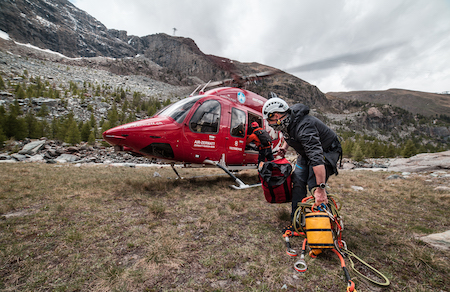
Air Zermatt AG
Air Zermatt is legendary in its own right. This Swiss rescue company was founded in 1968 by Beat H. Perren to bring aid to those who face danger in the Alps. It operates in the most challenging environments to rescue climbers and skiers, with experts highly prepared for every situation and available whenever you need them. Air Zermatt already counts 50,000 rescues, including three groundbreaking rescues that each earned prized heroism awards.
Air Zermatt provides air rescue in part of the Valais Canton, especially around the Matterhorn. The company maintains three bases in Switzerland: Zermatt, Raron, and Gampel, all in the Canton of Valais. In addition to Air Zermatt, Air-Glaciers was also commissioned by the Canton of Valais to cover the area.
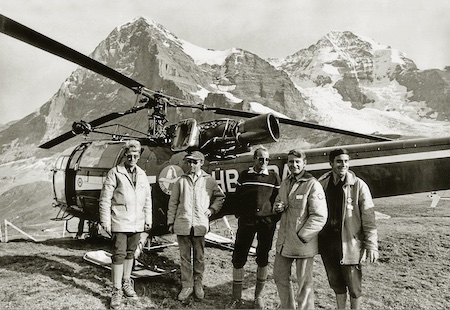
In 1973, Air Zermatt was the first company to introduce medicalization into their helicopters. And it was the first company to use the tripod rescue system to extract people from crevasses and other confined spaces. Today, you still can’t find better rescue helicopters than Air Zermatt’s. Extending ropes as long as 200 meters (656 feet), its equipment sets international standards.
All Air Zermatt team members who facilitate the training share their knowledge with pilots and crew members from as far away as Nepal, Croatia, Turkey and Chile. A standout is General Manager Gerold Biner; with more than 16,000 flight hours, he has performed 4,500 interventions and built an international reputation, notably in the Himalayas.
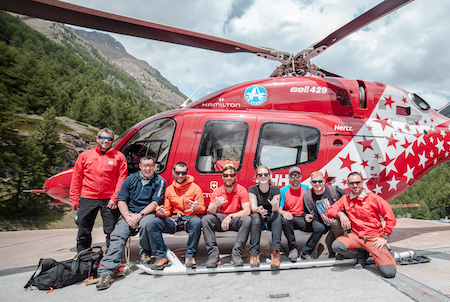
Air Zermatt began with an Agusta Bell 206A, adding an Alouette III the following year. It now operates a fleet of 12 helicopters: two Bell 429s, seven H125s, two H135s, and one H130 used for panoramic flights and flight school. All kinds of transports, tourist flights and rescue operations from the simple to the extreme can be carried out with this fleet.
Innovation
Air Zermatt innovates in many ways. For example, this year two Air Zermatt pilots developed a new system for changing elements on power lines. It allows for a faster, safer, and more efficient change of pilot warning spheres, spirals, spacers, and repairs to lines and cableway cables. It simplifies pilot and fitter workloads while increasing safety. Air Zermatt also developed a new rescue bag this year in collaboration with MK-Med Medizintechnik and Pax that’s approved by EU Medical Direct Regulations. And the company installed a new state-of-the-art virtual reality/motion simulator for pilot training in July.
Air Zermatt Training Center
Ever since Air Zermatt was founded, the company has made it a priority to share its experience, knowledge and innovations with the world. One way it accomplishes this priority is through its Air Zermatt Training Center.
Its goal is to help as many people as possible who have found themselves in an emergency situation in the mountains, on the roads, at home or elsewhere.
Rescue service in the high mountains has major challenges. High altitude, extreme temperatures, violent winds, unpredictable weather conditions and other dangers do not allow for error.
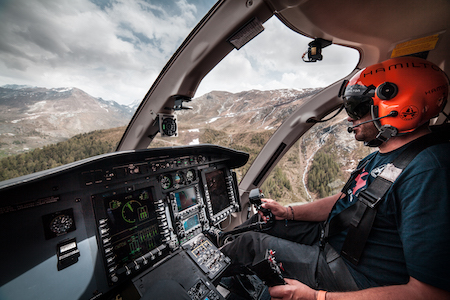
Air Zermatt established its Air Zermatt Training Center to provide basic and advanced training in the fields of emergency medicine and alpine rescue to professionals and amateurs alike. The internationally recognized courses are designed for doctors, paramedic crews, mountain rescuers, mountain guides and rescue specialists from police corps and fire brigades.
Twenty expert instructors train approximately 1,000 course participants from around the world in 200 course days per year in Switzerland and abroad.
Air Zermatt training courses include:
Mountain Emergency Medicine courses
HEMS crew member courses
Helicopter Underwater Escape Training (HUET)
Preparation course for certified flight & critical care paramedics
Fire services basic & advanced courses
First aid and first responder training
Flight training in accordance with EASA (European Union Aviation safety Agency)
Swiss Mountain License (MOU)
Professional Pilot License (CPL)
Night flight license (NIT)
External load training (HESLO)
Customized trainings and reschooling on H125 / AS350 B3 / Bell 429 / EC 130 T2
Training with Virtual Reality/Motion Simulator (VRM Switzerland)
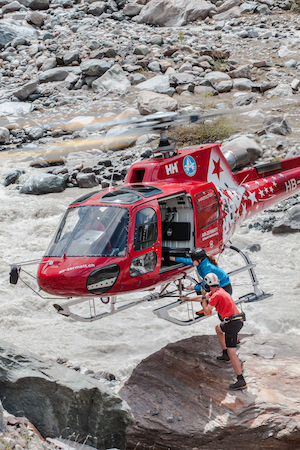
The course topics are regularly adapted to the latest findings and supplemented accordingly. The form of instruction is adapted to the topic. And all practical exercises, if required, are performed under stringent safety measures. There is no place for mistakes.
Snapshot of a HEMS TRAINING COURSE
The training center’s HEMS course consists of:
Five days of intense training.
Hovering and longline operations.
Training session to rig up the load transfer system.
Insertion / extraction rehearsal and practice.
Survival training.
Equipment of SAR/HEMS.
Flying into vertical walls on the longline.
Medical considerations during helicopter rescue.
Casualty assessment & treatment.
On the final day, crew members train with case scenarios at high altitude with casualties and search & rescue missions (hover & longline scenarios). Crew members also spend a complete day covering helicopter operating, aerology and flight mechanics.
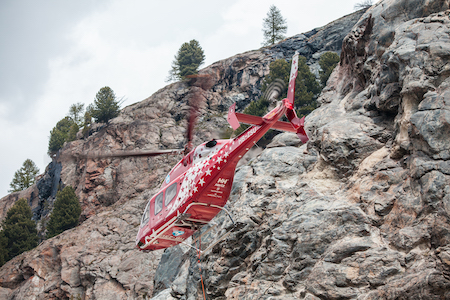
What’s it like to actually attend this training? Here’s a firsthand, you-are-there description:
The sun is rising and the Matterhorn village wakes up. Once introductions are completed, Claudio Amstutz, the operative director of the training center, welcomes every student and takes time to get to know every student. After a warm coffee for all, it’s time for action. A presentation of HEMS/SAR is provided by Dominik Imhof, a flight paramedic who manages this training.
Everyone is gearing up for the first day of training. We begin at the base to learn how to get in and out while hovering, then spend the afternoon conducting longline operations at high altitude.
The Air Zermatt team uses an Airbus H125 and Bell 429 for this training. The Air Zermatt instructor is overseeing the students practicing exercises; evaluation is ongoing and assistance is provided where needed. Feedback is provided at the base at the end of the lesson. It’s now time to discover and learn techniques and material used by the company. A rescue specialist is also here to provide profound knowledge in mountaineering and rescue equipment.
When training is complete, students are prepared for rescues under extreme conditions thanks to the high-level course.
As proof of the training’s credibility, it is certified by ICAR (International Commission for Alpine Rescue), ISMM (International Society for Mountain Medicine), and UIAA (The International Climbing and Mountaineering Federation).
Graduating students proudly achieve the International qualification of “Mountain Emergency Medicine for Emergency Physicians or Paramedics.”
READ MORE ROTOR PRO: https://justhelicopters.com/Magazine
WATCH ROTOR PRO YOUTUBE CHANNEL: https://buff.ly/3Md0T3y
You can also find us on
Instagram - https://www.instagram.com/rotorpro1
Facebook - https://www.facebook.com/rotorpro1
Twitter - https://twitter.com/justhelicopters
LinkedIn - https://www.linkedin.com/company/rotorpro1